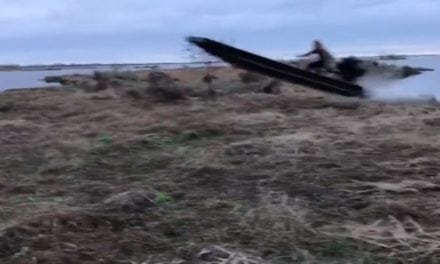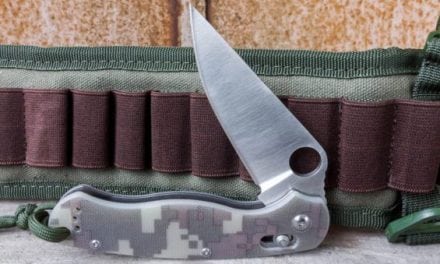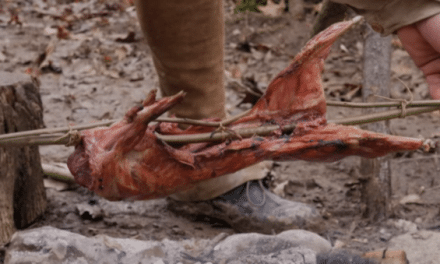by Ryan
We constantly discuss all the different skills and strategies that can help somebody survive in a SHTF scenario. However, when it comes right down to it we can boil everything down to a handful of things that can spell disaster. Sure, there is a possibility that you get eaten by a bear or starve to death. However, there are much more likely ways to perish.
When I look back on the survival challenges that I have completed, there was almost always something that caught me off guard. These are the things that could cause a person to die in a survival situation. In this article, I am going to discuss the most likely ways that a survival scenario can go South. I will also cover the ways you can avoid these pitfalls.

Panic
When a person is not prepared for a survival situation, it is very common for them to panic. This is the primary reason that people lose their lives in these scenarios. Panic prevents a person from rationally analyzing their situation and formulating a plan for success. Survival is all about adapting and strategizing.
It is a natural reaction. We are all built with a fight or flight mechanism when our lives are on the line. This pumps adrenaline through our veins. It is important that you learn to control this instinct and use it to your advantage. When you can calm your mind and think your way through the situation, you will likely come out on top.
Hypothermia
If you look at actual cause of death in survival situations, hypothermia kills more people than any other single threat. This is the process of your body shutting down as your internal temperature drops below 95F. One of the most dangerous aspects of hypothermia is that people think it can only happen in freezing conditions. The fact is that hypothermia can happen in just about any environment around the planet. Without protection from the elements, the average person can only survive three hours in cold or wet weather.
Hypothermia can set in with temperatures as high as 60F if you are wet. That means that it might be 90 degrees during the day in the jungle or desert, but if you sweat through your clothes then night temperatures can take you out. In environments where it rains constantly, you can bet that hypothermia is an issue. Staying dry is incredibly important.
You really have four tactics for avoiding hypothermia. The first option is having the right clothing. If you have the right clothing, you can survive most potential hypothermia. The next is fire. Fire can keep you both warm and dry no matter how cold it gets. Staying dry is a third strategy. Avoiding sweating and staying out of the rain is vital. Finally, shelter can help keep you dry and warm. Knowing how to build survival shelters can save your life.

Dehydration
As a person loses moisture, it can start to shut your body down. Dehydration can cause cramps, weakness, dizziness, heart palpitations, and eventually death. The problem is not typically finding water. The problem is finding water that is safe to drink. You also must factor in how much water you lose by being active or being in the sun all day. This adds to your risk for dehydration. Without water, the average person can only survive for three days.
To stay hydrated, you must know how to find and purify water. This means knowing how to trap rainwater, dig wells, build filters, and boil water. This also means having the right tools with you to get the job done. You should always have at least two ways to purify water. For me, this means a way to start fire for boiling and either a filter or iodine tablets. With these tools, you can easily stay hydrated.
Injury
I know from personal experience that injury is very likely in survival situations. This can happen in several ways. For me, I split open my head on a low hanging branch during my first survival challenge. I was able to stop the bleeding and clean the wound, but it does not always go that way. Cuts can become infected easily and infections kill in the wild.
I have personally seen several scenarios where survivalists have cut themselves with knives, hatchets, or axes. It is so easy to lose control of the blade or to fall and cut yourself. There are plenty of scenarios in which you can lose enough blood to die if the cut is bad enough. Even minor cuts can get infected and end your life. You must be careful with exposed blades.
Slipping and falling is very common in survival situations. The more you become hungry, tired, and dehydrated the more you lose your coordination. Just walking through the woods can turn into a twisted ankle or a busted up knee. In the worst scenarios, people have fallen to their death. Your best bet to survive is to slow down and be careful with every move you make. You also must have some first aid knowledge and preferably some first aid supplies.
Ingesting Bad Food or Water
There are several ways that you can kill yourself with the things you put in your mouth. One of the most common ways is by drinking unpurified water. This can cause you to be infected by bacteria, microorganisms, and even parasites. While they may not take effect for several days or even weeks, they can cause vomiting and diarrhea that quickly leads to death by dehydration.
Another common mistake is eating plants or mushrooms that are poisonous. Wild edibles are an excellent source of food in the wild, but only if you know for what you are looking. Poisonous plants and mushrooms can kill you in a matter of hours, or they may just cause vomiting and diarrhea that leads to dehydration or starvation.
Finally, you may ingest animals or fish that are not safe to eat. Many animals carry bacteria or parasites. If those issues are not cooked out of the food, it can make you sick very quickly. You may start vomiting within hours and could be dead in days.
The best ways to get past all of these issues is to know how to purify water, identify wild edibles, and properly cook food. This knowledge is all fairly basic, but requires studying to be proficient. With the right information, you can get past all of these challenges.
Allergic Reactions
Many people underestimate the potential risk of allergic reactions on the human body. Whether the source is food, insects, or plants, you can stop breathing and die if the reaction is severe enough. I have had reactions during survival challenges where plants have caused my throat to swell and restrict my breathing. You must be careful with which anything you might come in contact. Know your allergies and keep medicine with you if needed.

Getting Lost
You may have the best plan in the world to survive, but if you get turned around and lose your camp you are done. I have seen experienced survivalists go on a one hour hike and get lost to where they had to start over. It is important that you know strategies to navigate without getting lost. If you leave your camp, you must mark your trail so you can make your way back home. You must have a general understanding of your area and of the cardinal directions. With this knowledge, there should not be any reason for a person to get lost.
Other People
Understand that in SHTF scenarios, people can be your biggest threat. Even those you trust may turn on your when things get bad. They could take your resources and potentially even harm you or your family. If things go bad on a large scale, over 90% of the population will not be prepared. They will try to use for to take what they need to survive.
Your best option is to try and get away from large population centers. Blend it and get as far away as possible. If you set up a camp, keep it hidden. Use regular patrols and scouting to ensure nobody else stumbles upon your camp. Have weapons handy and be prepared to defend your camp if other people do find you. Keep your guard up and trust nobody.
In Conclusion
When you are trying to survive, the things that might kill you are not always obvious. If you have the right preparation and skills, you should be able to get through all of these issues. You must be realistic about what you will face in the wild. Have your pack ready. Bring the right clothing. Have the right tools. Have a plan that will keep you calm and let you get through the day.
While the right tools make everything easier, staying calm is all about knowledge and training. If you know what you are doing, there is no need to panic. If you know nothing, panic is the only option you have. With the right knowledge and training, you should have a plan for each of these potentially life threatening scenarios. When the time comes that you must make it happen, you should have a blueprint to get out alive.
















